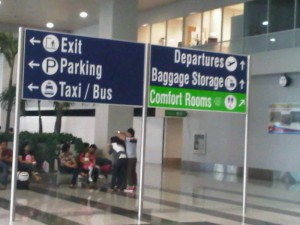DOTC set to seal Terminal 3 deal
The transportation department hopes to conclude negotiations with contractor Takenaka Corp. of Japan next week so that the Ninoy Aquino International Airport (Naia) Terminal 3 may be fully operational by the first quarter of 2014.
According to Transportation Secretary Joseph Abaya, Naia Terminal 3 is still operating at 52 percent of its total capacity of 13 million passengers a year since it opened in 2008.
For years, plans to address structural issues at Naia terminal 3 have been on hold because of a legal dispute between the Philippine government and local consortium Philippine International Airport Terminal Co. and its German shareholder Fraport AG.
Abaya said the signing of the so-called construction work agreement with Takenaka—the original airport contractor—at a cost of P1.9 billion would enable the Naia Terminal 3 to become fully operational.
“The contract is now with [Takenaka]. Hopefully, we could sign with them by next week,” Abaya said during a roundtable discussion organized by the Philippine Daily Inquirer on Wednesday.
“This will make it 100-percent operational within eight months of signing. Hopefully [the terminal] will be available before we host the World Economic Forum next summer,” Abaya said.
By enabling Terminal 3 to operate at full capacity, the Department of Transportation and Communications (DOTC) may get to reduce the congestion at the older Terminal 1 facility.
In line with this, Abaya said the DOTC is moving forward with the P2.8 billion rehabilitation of Naia terminal 1, noting that the agency planned to bid out by next month contracts to address structural and architectural components to the private sector.
The architectural component will also include a revamp of Terminal 1 interiors. An online news report on Wednesday showed that designers Kenneth Cobonpue, Budji Layug and architect Royal Pineda are among the parties seeking to participate in the rehabilitation program.
“We went for a performance-based design. This will allow us to rehabilitate Naia without disrupting operations,” he said.
Abaya, meanwhile, said that local designers like Cobonpue and Layug would help put “a Filipino taste and modern feel” into Naia Terminal 1, which opened in the 1980s.
“The objective is to have that ‘aha’ effect,” Abaya said.

